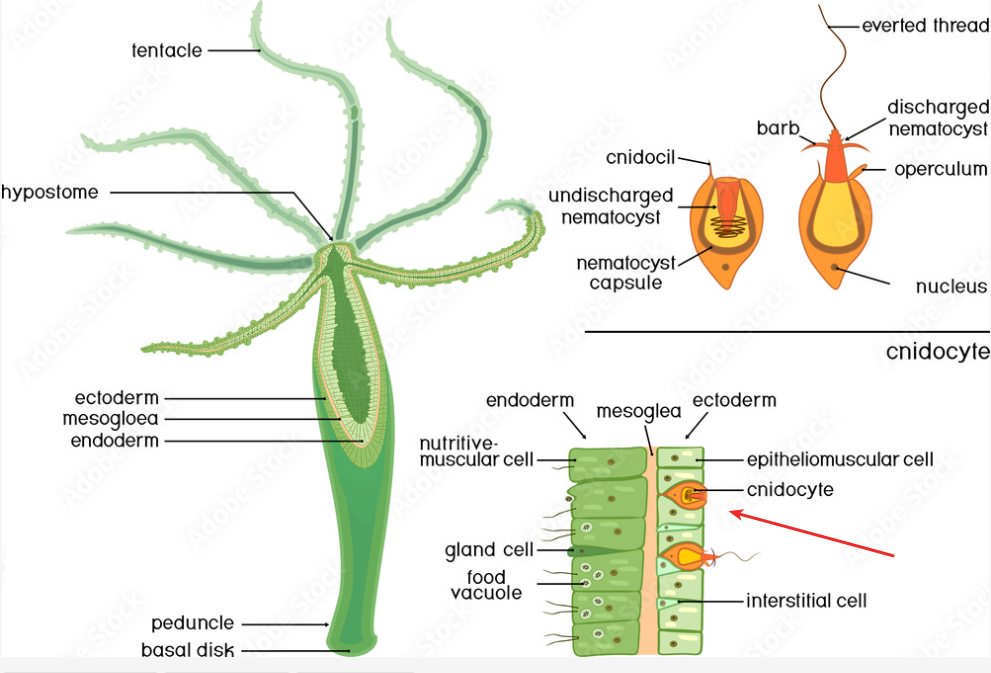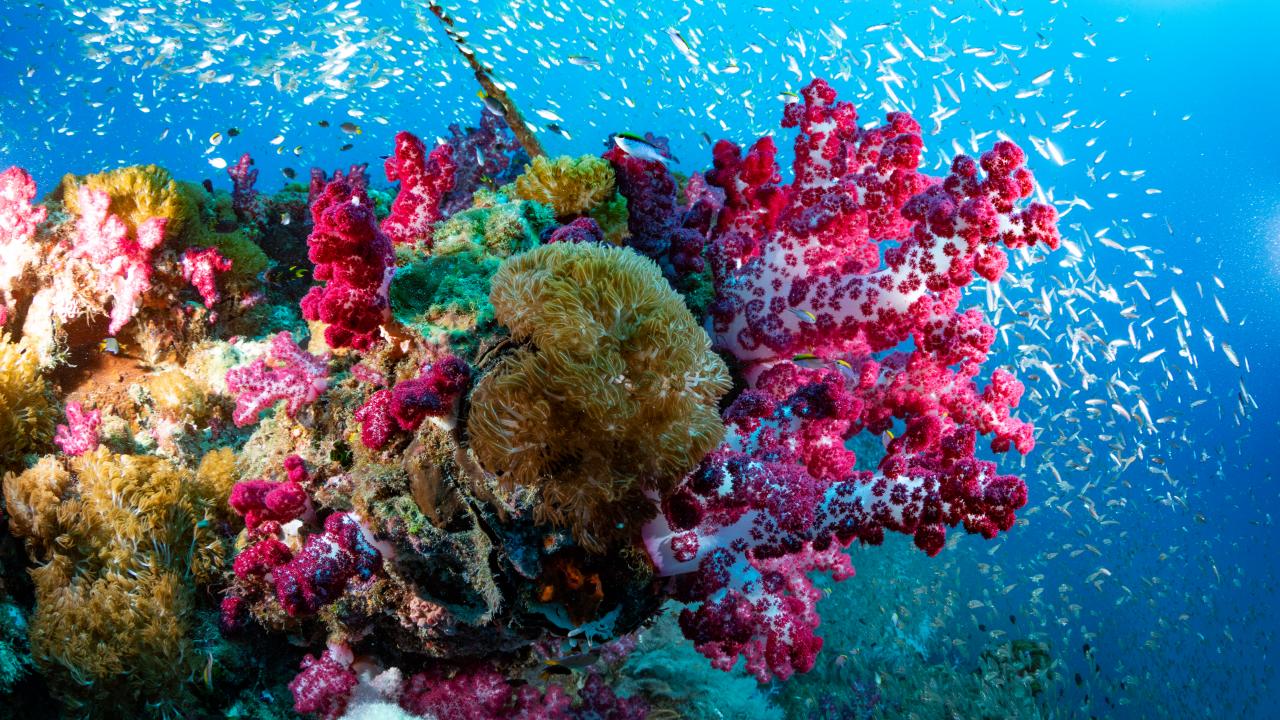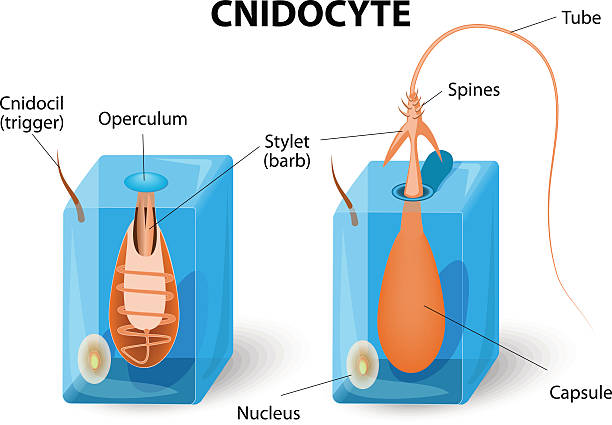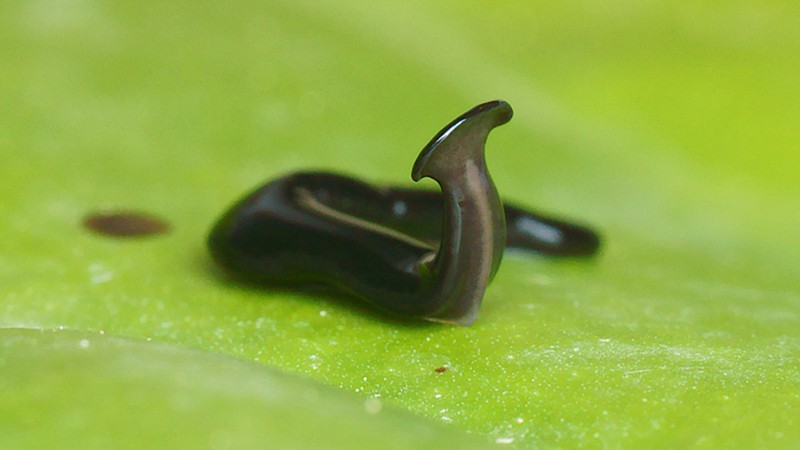Exploring the Mysteries of Cnidarians: Form, Function, and Fascination in the Aquatic World
Posted on February 5, 2024 • 17 minutes • 3419 words • Other languages: Русский
Table of contents
This article compiles common questions about cnidarians, which we have gathered and answered extensively. It delves into the distinctive characteristics, feeding behaviors, movement mechanisms, and types of symmetry of these captivating aquatic creatures. From the shared traits of cnidarians and flatworms to their ecological importance and the complex strategies they employ to navigate their environments, this piece offers a comprehensive exploration of the form, function, and fascination surrounding cnidarians in the aquatic world.
What are cnidarians?
Cnidarians, pronounced as “nid-air-ee-ans,” constitute a diverse and fascinating group within the animal kingdom, characterized by their distinctive body structure, life cycles, and, most notably, their unique stinging cells. This group includes familiar organisms such as jellyfish , sea anemones , corals , and hydra . The term “cnidarian” itself derives from the Greek word “cnidos,” meaning stinger or nettle, a reference to their stinging cells. These creatures play vital roles in aquatic ecosystems, ranging from the shallow seashores to the deepest parts of the oceans.
Key Characteristics of Cnidarians
-
Radial Symmetry: Cnidarians exhibit radial symmetry, meaning their body parts radiate out from a central axis. This symmetry allows them to interact with their environment from all directions, an advantageous trait for sessile organisms like corals and sea anemones, as well as for free-swimming species like jellyfish.
-
Two Basic Body Forms: They display two main body forms throughout their life cycle: the sessile polyp and the free-swimming medusa. Polyps are cylindrical with a mouth surrounded by tentacles on one end, anchoring themselves to surfaces. Medusae are bell-shaped, with their mouth and tentacles facing downwards, adapted for a life adrift.
-
Cnidocytes: The defining feature of cnidarians is their cnidocytes , specialized cells that contain nematocysts (stinging organelles). These cells are used for prey capture and defense. When triggered, the nematocyst ejects a barbed or coiled thread that can inject toxins into the prey or predator.
| Cnidocyte |
|---|
 |
-
Simple Tissue Organization: Cnidarians possess a simple body plan with two main layers: the outer epidermis and the inner gastrodermis, separated by a gelatinous substance called mesoglea. They lack complex organs and systems found in more advanced animals, but some species show a primitive nerve net for basic movements and responses.
-
Reproduction: They exhibit a variety of reproductive strategies, including sexual and asexual reproduction. Many cnidarians have complex life cycles that alternate between polyp and medusa forms, utilizing both methods for reproduction. Coral reefs, for example, are formed by the asexual reproduction of polyps, while many jellyfish species release eggs and sperm into the water for sexual reproduction.
Ecological Importance
Cnidarians are crucial for the health and stability of marine ecosystems. Coral reefs , built by coral polyps, are among the most biodiverse and productive ecosystems on Earth, supporting thousands of species of fish, invertebrates, and other marine organisms. Additionally, cnidarians serve as key predators and prey within their food webs, helping to maintain the balance of marine populations.
| Coral reef |
|---|
 |
Human Interactions and Conservation Concerns
While cnidarians are admired for their beauty and ecological significance, their interactions with humans can be double-edged. On one hand, coral reefs are vital for local economies, supporting fishing, tourism, and protecting coastlines from erosion. On the other hand, some cnidarians, like certain jellyfish, can be hazardous to humans due to their potent stings.
Conservation efforts are crucial for cnidarians, particularly corals, which are under threat from climate change, ocean acidification, pollution, and destructive fishing practices. The loss of coral reefs would have devastating impacts on marine biodiversity and the human communities that depend on them.
In summary, cnidarians are not just simple marine creatures; they are essential components of the marine environment, with complex life cycles and ecological roles. Their study provides insights into the evolution of multicellular organisms, the functioning of ecosystems, and the impacts of human activity on the marine world.
How do cnidarians eat?
Cnidarians, with their relatively simple body plans and unique cellular structures, have developed fascinating feeding mechanisms that allow them to capture and consume prey efficiently despite lacking complex digestive systems found in higher animals. Their feeding strategies are closely tied to their two main body forms—the sessile polyp and the free-swimming medusa—and the presence of specialized cells known as cnidocytes, which house the nematocysts or stinging capsules.
| Nematocyst is an organelle (subcellular structure) containing extrusive filaments. |
|---|
 |
Feeding Mechanism
Cnidocytes and Nematocysts: The key to understanding how cnidarians eat lies in their cnidocytes, cells that contain the nematocysts. These microscopic, harpoon-like structures are triggered by physical or chemical stimuli, such as the touch of a prey item. Upon activation, the nematocyst explosively discharges a long, coiled, thread-like tubule that can penetrate and deliver toxins to the prey. These toxins immobilize the prey by paralyzing or killing it, making it easier for the cnidarian to ingest.
Capture and Ingestion: After the prey is immobilized, the cnidarian uses its tentacles to maneuver the prey towards its mouth. The mouth of a cnidarian is the only opening to its gastrovascular cavity, serving both as an entrance for food and an exit for waste. Once the prey is within reach, the cnidarian expands its mouth to engulf the prey whole.
| The mouth |
|---|
 |
Digestion: Inside the gastrovascular cavity, the process of digestion begins. Cnidarians have a simple digestive system, lacking a separate stomach and intestines. Instead, the gastrovascular cavity serves multiple functions: digestion, nutrient absorption, and even distribution of nutrients throughout the organism. Enzymes are secreted into the cavity to break down the prey into simpler compounds that can be absorbed by the surrounding tissues. This extracellular digestion is followed by intracellular digestion, where the partially digested food is engulfed by cells lining the gastrovascular cavity for further breakdown and nutrient absorption.
Waste Excretion: After digestion, undigested parts of the prey are expelled through the mouth, as cnidarians do not have a separate anus for waste removal. This simple in-and-out mechanism is efficient for the cnidarian’s lifestyle and energy needs.
Variations Among Cnidarians
-
Jellyfish (Medusae): Free-swimming jellyfish often use their tentacles like drift nets, capturing plankton and small fish as they move through the water. Their tentacles can extend outward, creating a large area to ensnare prey.
-
Sea Anemones and Corals (Polyps): These sessile cnidarians rely on the currents or the movements of their prey to bring food within reach of their tentacles. Corals, particularly, may also receive nutrients from symbiotic algae (zooxanthellae) living in their tissues, supplementing their diet with energy produced via photosynthesis .
-
Hydra: Freshwater hydra use their tentacles to capture prey, demonstrating a remarkable ability to stretch their body and tentacles to many times their resting length to catch and ingest their meal.
Ecological Role
The feeding habits of cnidarians play a crucial role in aquatic ecosystems. They control the populations of smaller marine organisms, forming an essential link in the marine food web. In coral reefs, for example, corals' relationship with zooxanthellae provides a foundational source of energy that supports a vast diversity of life, demonstrating the complex interdependence of organisms in marine ecosystems.
In summary, the feeding process of cnidarians is a marvel of evolutionary adaptation, allowing these organisms to thrive in a wide range of aquatic environments. Their methods of capturing, ingesting, and digesting prey underscore the efficiency of even the simplest biological systems, highlighting the intricate balance of marine ecosystems.
How do cnidarians move?
Cnidarians exhibit a variety of movement mechanisms that are as fascinating as they are diverse, reflecting their simple yet effective biological designs. These mechanisms vary significantly between the two primary life forms within the cnidarian phylum: the sessile polyps and the free-swimming medusae. Despite their basic nerve and muscle structures, cnidarians have adapted to their environments in intriguing ways, showcasing the diversity of evolutionary solutions to the challenges of movement in aquatic environments.
Movement in Polyps
Polyps, such as sea anemones and coral polyps, are generally sessile, meaning they attach themselves to a surface and do not move freely. However, this does not mean they are entirely immobile:
-
Sessile Adaptation: Polyps can adjust their position slightly through slow, creeping movements of their base or by bending their body. This movement is often so slow it’s imperceptible over short periods but allows the polyp to optimize its position for feeding or light exposure.
-
Muscle Contraction: They can also move by contracting their muscles. The body of a polyp is equipped with longitudinal muscles along the body wall, allowing it to contract and expand both its body and tentacles. This action can aid in capturing prey, defending against predators, or expelling undigested waste.
-
Colonial Movement: Some polyps, such as those forming coral reefs, are part of larger, colonial organisms. While individual polyps are fixed, the colony itself grows over time, expanding its reach and influence in the ecosystem. Movement, in this case, is growth-oriented rather than locomotive.
Movement in Medusae
Medusae, the free-swimming life stage of cnidarians like jellyfish, exhibit more dynamic forms of movement:
-
Jet Propulsion: Jellyfish are renowned for their pulsating movements, contracting and relaxing their bell-shaped bodies to propel themselves through the water. This jet propulsion system is efficient and allows jellyfish to cover significant distances. The contraction of the bell expels water downwards, propelling the jellyfish upwards or forwards, while relaxation allows the bell to refill with water, preparing for the next contraction.
-
Passive Drifting: Alongside active movement, medusae also drift with ocean currents. This passive form of movement is energy-efficient and enables jellyfish to travel vast distances across oceans, sometimes leading to blooms (large gatherings) of jellyfish in certain areas due to converging currents.
-
Sinking and Floating: Some jellyfish can control their buoyancy by adjusting the water content within their bodies, allowing them to sink or float according to their needs, whether for feeding or avoiding predators.
Coordination of Movement
Cnidarians lack a centralized nervous system but possess a nerve net, a more diffuse network of nerve cells spread throughout their body. This nerve net coordinates the contraction of muscles for movement, enabling responses to stimuli without the need for a brain or complex sensory organs. This system is surprisingly effective, allowing cnidarians to respond quickly to changes in their environment, capture prey, and avoid threats.
Ecological Implications
The movement mechanisms of cnidarians play crucial roles in their survival and ecological impact. For example, the ability of jellyfish to move vertically in the water column allows them to access different feeding grounds, affecting plankton populations and thus influencing the broader marine food web. Coral polyps' growth movements contribute to the formation of coral reefs, which are vital habitats for a multitude of marine species.
In summary, cnidarians demonstrate a wide range of movement strategies, from the slow, almost imperceptible adjustments of sessile polyps to the more dynamic jet propulsion of medusae. These movements, governed by simple yet effective biological systems, underscore the cnidarians' adaptability and their crucial role in marine ecosystems. Despite their basic nervous and muscular structures, cnidarians have evolved to move in ways that perfectly suit their ecological niches, showcasing the diversity and ingenuity of life in the earth’s oceans.
What type of symmetry do cnidarians have?
Cnidarians, a diverse group of aquatic organisms including jellyfish, corals, sea anemones, and hydras, exhibit a form of body symmetry known as radial symmetry. This type of symmetry is a fascinating aspect of their biology, influencing not just their appearance but also their ecological roles and behaviors.
Radial Symmetry Explained
Radial symmetry means that the body of an organism can be divided into similar halves by passing through the central axis at any angle. In other words, cnidarians have body plans that are arranged around a central point, much like the spokes of a wheel.
| Radial symmetry |
|---|
 |
This contrasts with bilateral symmetry, seen in most other animals, where the body can only be divided into mirror-image halves along a single plane.
Features and Advantages of Radial Symmetry in Cnidarians
-
360-degree Interaction: Radial symmetry allows cnidarians to interact with their environment in all directions without needing to reorient their bodies. This is particularly advantageous for sessile (non-moving) cnidarians like corals and sea anemones, which can capture prey and defend against predators from any direction.
-
Simplified Nervous System: The radial body plan is associated with a more simplified nervous system, fitting for the cnidarians' lifestyle. Their nerve net is distributed more or less evenly across their body, enabling them to respond to stimuli from any direction without the need for a centralized brain.
-
Efficient Food Capture: For free-swimming cnidarians like jellyfish, radial symmetry is conducive to their method of feeding. Their tentacles, arrayed in a radial pattern around their mouths, can capture prey from any direction as they drift or swim through the water.
Variations of Radial Symmetry in Cnidarians
While all cnidarians share the basic feature of radial symmetry, there is variation in how this symmetry is expressed:
-
Simple Radial Symmetry: Seen in many jellyfish and some polyps, where body parts radiate out evenly from the central axis, allowing for an equal distribution of sensory and feeding structures around the body.
-
Biradial Symmetry: A variation where the basic radial symmetry is slightly modified, allowing for differences in the arrangement of certain body parts. Some cnidarians may show tendencies towards biradial symmetry, where two sides of the body are slightly different, often due to the adaptation of their feeding or reproductive structures.
Ecological and Evolutionary Implications
Radial symmetry in cnidarians is not just a matter of body shape but has profound implications for their ecology and evolution:
-
Adaptation to Sessile Life: For sessile organisms, radial symmetry is an efficient adaptation that maximizes their interaction with the environment, crucial for feeding and reproduction.
-
Evolutionary Perspective: Radial symmetry is considered an ancient trait, with cnidarians being among the earliest multicellular organisms to exhibit this form of symmetry. It represents a key stage in the evolution of animal life, with cnidarians providing critical insights into the transition from simple to more complex forms of life.
-
Niche Specialization: The radial symmetry of cnidarians has allowed them to specialize and thrive in various aquatic environments, from deep oceans to shallow coastal waters, playing vital roles in marine ecosystems.
In summary, the radial symmetry of cnidarians is a defining characteristic that influences their behavior, ecology, and evolution. This form of symmetry allows them to efficiently interact with their surroundings, capture food, and defend against predators, demonstrating the intricate ways in which organismal form and function are intertwined in the natural world.
Which characteristic is shared by cnidarians and flatworms?
Cnidarians (such as jellyfish, corals, and sea anemones) and flatworms (belonging to the phylum Platyhelminthes) are distinct groups of invertebrates with different body plans and life histories. However, they share a notable characteristic in their simple digestive systems, specifically, the presence of a gastrovascular cavity that serves both as the site of digestion and distribution of nutrients throughout the organism.
| A flatworm |
|---|
 |
Gastrovascular Cavity
-
Definition: The gastrovascular cavity is a central digestive compartment with only one opening that serves as both mouth and anus. This cavity is responsible for the ingestion of food, digestion (both extracellular and intracellular), and expulsion of undigested waste.
-
Function in Cnidarians: In cnidarians, the gastrovascular cavity is the primary internal space where digestion takes place. It allows these organisms to break down their prey with enzymes and distribute nutrients to all parts of their body. Given their radial symmetry, the gastrovascular cavity suits their body plan, allowing efficient distribution of nutrients from a central location.
-
Function in Flatworms: Flatworms, despite being more complex and bilaterally symmetrical, also rely on a gastrovascular cavity for digestion and nutrient distribution. However, due to their flat bodies, the digestive system often branches throughout the organism to maximize surface area for nutrient absorption. Unlike cnidarians, many flatworms have a more developed digestive system with a pharynx that protrudes to ingest food.
Significance of the Shared Characteristic
The presence of a gastrovascular cavity in both cnidarians and flatworms highlights a fundamental approach to nutrient acquisition and distribution in simpler multicellular organisms. This shared characteristic underscores an evolutionary solution to the challenges of internal digestion and distribution in the absence of a circulatory system.
However, it’s important to note that while they share this characteristic, the evolutionary contexts and the structural complexity of their gastrovascular systems differ significantly. Cnidarians represent an earlier branch in the evolutionary tree of life, showcasing radial symmetry and a simpler body plan. In contrast, flatworms are part of the Bilateria, organisms with bilateral symmetry, which generally exhibit more complexity in body structure and organ systems.
This similarity in digestive system structure is a fascinating example of how different groups of organisms have evolved to solve similar biological problems, reflecting the diverse yet convergent paths taken by life on Earth.
Frequently asked multiple-choice questions on cnidarians
We’ve also gathered a selection of frequently asked multiple-choice questions that appear on biology examinations. Below is the list, complete with answers and detailed explanations.
Multiple Choice Questions on Cnidarians
-
What is the basic body plan of cnidarians?
- A) Triploblastic
- B) Diploblastic
- C) Coelomate
- D) Acoelomate
Correct Answer: B) Diploblastic
Explanation: Cnidarians are characterized by having two primary layers of cells: an outer epidermis and an inner gastrodermis, with a gelatinous substance called mesoglea between them. This makes them diploblastic organisms, unlike triploblastic animals which have three primary layers. -
Which class of cnidarians includes jellyfish?
- A) Anthozoa
- B) Scyphozoa
- C) Hydrozoa
- D) Cubozoa
Correct Answer: B) Scyphozoa
Explanation: Jellyfish belong to the class Scyphozoa, which are known for their prominent medusa stage. This class is distinct from Anthozoa, which includes corals and sea anemones; Hydrozoa, which includes the Portuguese man-of-war; and Cubozoa, which includes box jellyfish. -
What feature is unique to cnidarians?
- A) Bilateral symmetry
- B) Cnidocytes
- C) Exoskeleton
- D) Segmentation
Correct Answer: B) Cnidocytes
Explanation: Cnidocytes are unique to cnidarians. These specialized cells contain organelles called nematocysts, which can explode outward, delivering a sting to prey or predators. -
Which of the following is not a form found in cnidarians?
- A) Polyp
- B) Medusa
- C) Larva
- D) Trochophore
Correct Answer: D) Trochophore
Explanation: Cnidarians exhibit two main body forms: polyp and medusa. The larva is also a developmental stage in cnidarians. Trochophore is a larval form found in some mollusks and annelids, not cnidarians. -
How do cnidarians reproduce?
- A) Only sexually
- B) Only asexually
- C) Both sexually and asexually
- D) Through budding only
Correct Answer: C) Both sexually and asexually
Explanation: Cnidarians can reproduce both sexually and asexually. Sexual reproduction usually occurs in the medusa stage, where gametes are produced and released into the water. Asexual reproduction can occur in the polyp stage through budding, fission, or fragmentation. -
Which of the following habitats are cnidarians primarily associated with?
- A) Freshwater environments
- B) Terrestrial environments
- C) Marine environments
- D) Desert environments
Correct Answer: C) Marine environments
Explanation: The vast majority of cnidarians are marine organisms. They inhabit a wide range of oceanic environments, from shallow coastal waters to the deep sea. A few species can be found in freshwater, but they are the exception. -
What role do cnidarians play in coral reef ecosystems?
- A) Decomposers
- B) Primary producers
- C) Reef builders
- D) Parasites
Correct Answer: C) Reef builders
Explanation: Many cnidarians, particularly those in the class Anthozoa, such as corals, are vital for the construction of coral reefs. They secrete calcium carbonate to form hard skeletons, which accumulate over time to create the reef structure. -
Which cnidarian class is characterized by having a box-shaped medusa?
- A) Anthozoa
- B) Hydrozoa
- C) Scyphozoa
- D) Cubozoa
Correct Answer: D) Cubozoa
Explanation: Cubozoans, or box jellyfish, are known for their distinctive box-shaped medusa stage. They are also known for some species having extremely potent venom. -
What is the main function of the gastrovascular cavity in cnidarians?
- A) Circulation
- B) Excretion
- C) Digestion and distribution of nutrients
- D) Gas exchange
Correct Answer: C) Digestion and distribution of nutrients
Explanation: The gastrovascular cavity in cnidarians serves as the site of digestion and also distributes nutrients throughout the organism. This cavity opens only at one end, functioning both as a mouth and an anus. -
Which of the following statements is true regarding cnidarians?
- A) They have a closed circulatory system.
- B) They exhibit cephalization.
- C) They have a complete digestive system.
- D) They exhibit radial symmetry.
Correct Answer: D) They exhibit radial symmetry.
Explanation: Cnidarians are characterized by radial symmetry, meaning their body parts radiate from the center, allowing them to interact with their environment in all directions. This is distinct from bilateral symmetry, where there is a clear left and right side to the organism. Cnidarians do not have a circulatory system, cephalization, or a complete digestive system with a separate mouth and anus.
Share
Tags
Counters

